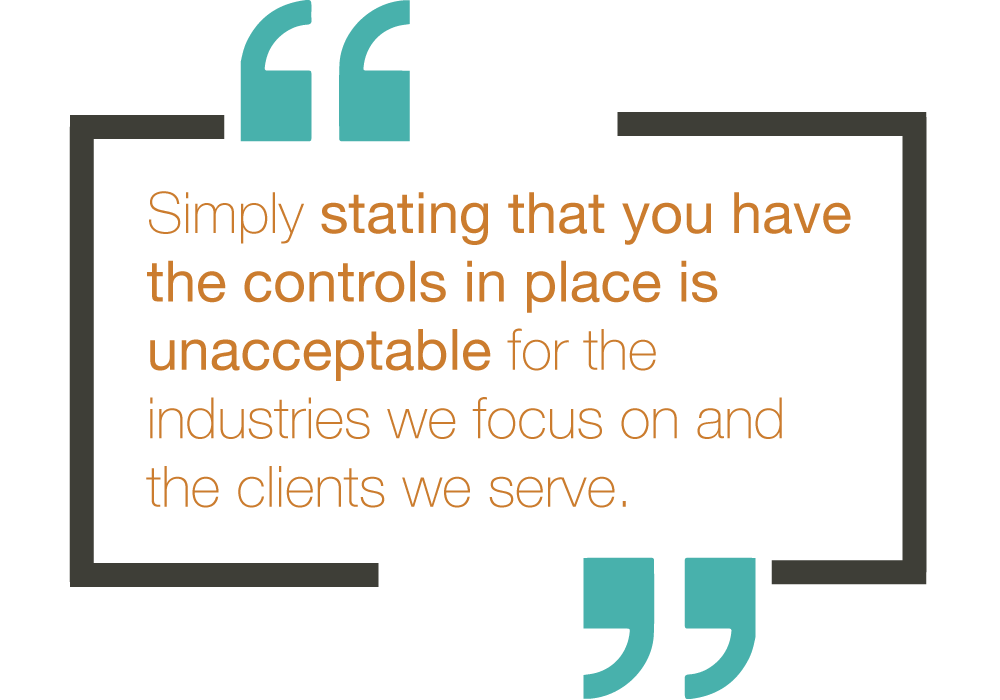
Advancements in cloud technology have completely changed the way organizations use, store, process, and share data, applications, and software. Cloud environments tend to be more cost-efficient and time-efficient…so why wouldn’t you put your data in the cloud?
Because so many organizations are putting so much sensitive data into cloud environments, they have inevitably become targets for malicious attackers. New security vulnerabilities are consistently being discovered and, in a vicious cycle, traditional security vulnerabilities still show up in cloud environments.
In response to the ever-growing threat landscape, the Cloud Security Alliance (CSA) has created industry-wide standards for cloud security. Their report, “The Treacherous 12 – Top Threats to Cloud Computing + Industry Insights,” arms cloud users and cloud providers with guidance on risk mitigation for their cloud strategies.
Based on research from the CSA Top Threats Working Group, the CSA determined the following 12 risks for cloud security to be the most critical issues.
12 Cloud Security Risks
Data Breach
The CSA defines a data breach as an incident in which sensitive, protected, or confidential information is released, viewed, stolen, or used by an individual who is not authorized to do so. Data breaches in cloud environments can permanently damage your organization’s reputation, cause you to lose current and future clients from a lack of trust, cause lawsuits to develop, and cause a costly process for investigation of the data breach and notifying customers.
Insufficient Identity, Credential, and Access Management
Centralized passwords and interconnected identity systems are conveniences creating huge risks for cloud security. Once an attacker exploits insufficient identity, credential, and access management systems, they can enter your cloud environments and have the potential to read, modify, or delete sensitive data and release malicious software into the system.
Insecure UIs and APIs
Weak user interfaces (UIs) and application programming interfaces (APIs) expose security vulnerabilities in the availability, confidentiality, and integrity of a cloud environments.
System Vulnerabilities
According to the CSA, system vulnerabilities are exploitable bugs in programs that attackers use to infiltrate a system, steal data, and take control. System vulnerabilities within cloud environments put the security of all services and data at risk.
Account Hijacking
When accounts are hijacked in cloud environments, that account becomes the base for an attacker. The attacker can then eavesdrop on and manipulate activities, transactions, and data.
Malicious Insiders
A malicious insider could be a current or former employee, vendor, or business partner who has or had authorized access to a system or data and is now intentionally exploiting that access to impact the availability, confidentiality, and integrity of cloud environments.
Advanced Persistent Threats
The CSA defines an advanced persistent threat as a parasitical cyberattack that breaks into systems and establishes a foothold in the computing infrastructure, and from there, they can steal data, intellectual property, etc.
Data Loss
It may not seem like it, but data is one of the most valuable assets that a company can possess. Even if lost on accident and not the result of a malicious attack, permanently losing data could be devastating to an organization.
Insufficient Due Diligence
When considering migrating to the cloud, an organization that does not perform extensive due diligence and rushes to adopt cloud technologies exposes itself to commercial, technical, legal, financial, and compliance risks.
Abuse and Nefarious Use of Cloud Services
The CSA says that this risk could look like poorly secured cloud deployments, free cloud service trials, or fraudulent payment for account sign-up. This lessens the availability, confidentiality, and integrity of cloud environments for legitimate customers.
Denial of Service
DoS attacks are meant to prevent users from being able to access their data or applications.
Shared Technology Vulnerabilities
Cloud providers deliver services by sharing infrastructure, platforms, and applications, but this comes with an underlying risk. Shared technology vulnerabilities are dangerous because they could affect an entire cloud environment at once.
How to Mitigate the 12 Risks for Cloud Security
There are several ways to mitigate each of the CSA’s 12 risks for cloud security, but we see five overarching themes when reviewing the CSA’s guidance:
- Multifactor authentication
- Cultivating cybersecurity awareness among your employees
- Controlling access based on business need to know
- Encryption and key management
- Effective incident response plans
Multifactor Authentication
Multifactor authentication (MFA) can help cloud users and cloud providers mitigate multiple areas of risk.
MFA is an extra security measure that could prevent a single stolen credential from being the key to gaining full access to a cloud environment. It’s a key step in preventing data breaches, account hijacking, breaches caused from shared resources, and creating a secure identity and access management (IAM) system.
Cultivate Awareness
Creating proactive security measures within your organization encourages a culture of security and compliance. Providing your employees with educating and training related to cybersecurity awareness helps them spot advanced persistent threats, malicious insiders, system vulnerabilities, DoS attacks, and other suspicious activities in cloud environments.
Controlling Access
Controlling access to sensitive areas based business need to know and identifying and authenticating that access is a best practice that helps prevent data breaches, insufficient IAM, system vulnerabilities, account hijacking, and malicious insiders. The more people who have access to sensitive areas, the more risk there is.
Encryption Best Practices
Encryption, key management, hardening, and patch installation are also valuable ways to mitigate the 12 risks for cloud security. Encrypted data is worth nothing to hackers. Key rotation and management prevents insufficient IAM and malicious insiders from entering cloud environments. Installing new patches when they’re issued helps identify and mitigate system and shared technology vulnerabilities.
Incident Response Plans
Incident response plans play a large role in mitigating the 12 risks for cloud security. Is a DoS is detected, how does your organization respond? Does your cloud provider have an incident response framework that addresses the misuse of resources? What’s the first step your organization takes after an advanced persistent threat is identified? Incident response plans could save your organization.
What would you add to the CSA’s list of 12 risks most critical issues for cloud security? How has your organization mitigated these risks? What risks do you identify as critical?
Whether you’re a cloud user or cloud provider, we want you to make informed decisions about risk mitigation for your cloud strategy. Contact us today to start learning about protecting your cloud environments.
CSA’s Top Threats to Cloud Computer Plus: Industry Insights
CSA’s Security Guidance for Critical Areas of Focus in Cloud Computing
CSA’s Security as a Service Implementation Guide
Compliance is Never Enough: Webinar Series





 CompuMail has gained invaluable insight while undergoing the audit process. CompuMail’s Chief Security Officer tells us, “We believe that undergoing annual internal and third-party audits is crucial to our business. Simply stating that you have the controls in place is unacceptable for the industries we focus on and the clients we serve.”
CompuMail has gained invaluable insight while undergoing the audit process. CompuMail’s Chief Security Officer tells us, “We believe that undergoing annual internal and third-party audits is crucial to our business. Simply stating that you have the controls in place is unacceptable for the industries we focus on and the clients we serve.” Since 1994, CompuMail has been delivering innovative communication solutions and print and mail services to clients that span across multiple industries. They offer a robust list of solutions with unique platforms for service delivery that can meet all of your business essentials; physical and digital communications, data protection and secure portals, coupled with superior customer service and support. CompuMail cultivates lasting partnerships with their valued customers to ensure that they see the best possible results under the highest level of data security, at the most competitive price. Technology changes and business changes, but CompuMail’s commitment to service does not.
Since 1994, CompuMail has been delivering innovative communication solutions and print and mail services to clients that span across multiple industries. They offer a robust list of solutions with unique platforms for service delivery that can meet all of your business essentials; physical and digital communications, data protection and secure portals, coupled with superior customer service and support. CompuMail cultivates lasting partnerships with their valued customers to ensure that they see the best possible results under the highest level of data security, at the most competitive price. Technology changes and business changes, but CompuMail’s commitment to service does not.